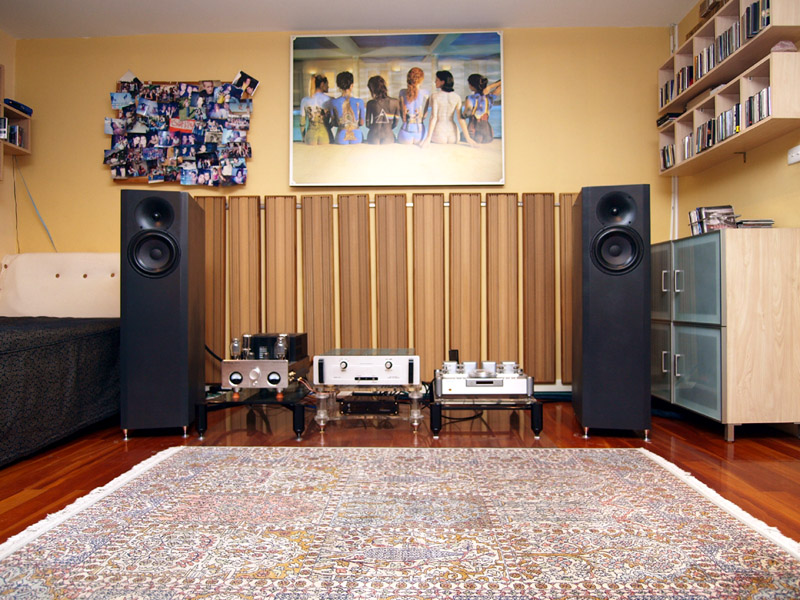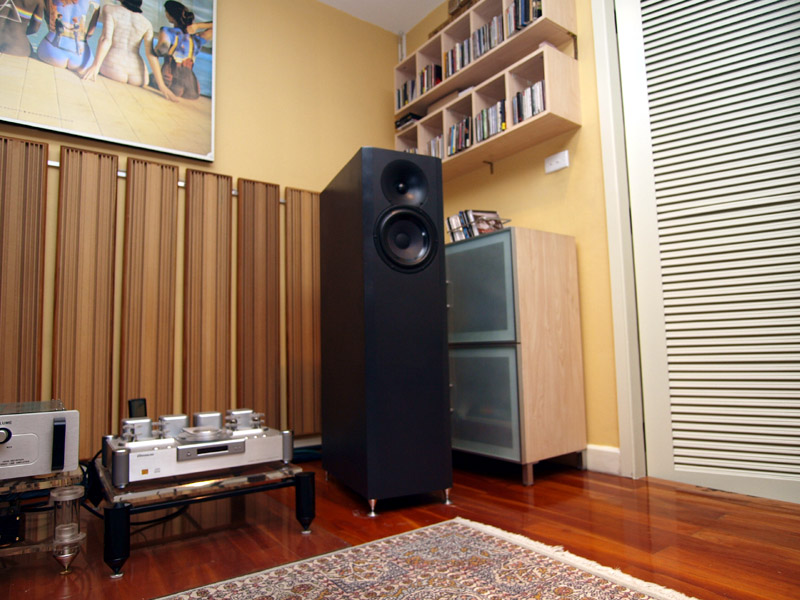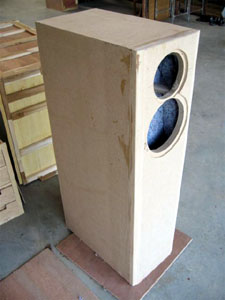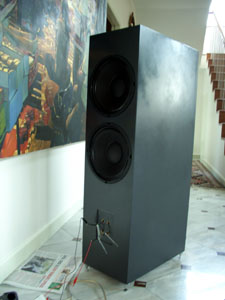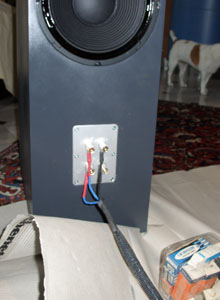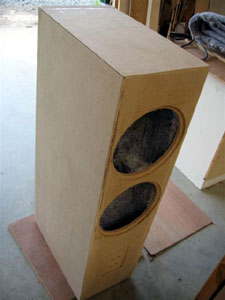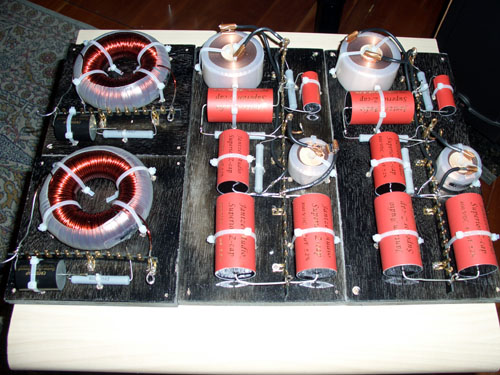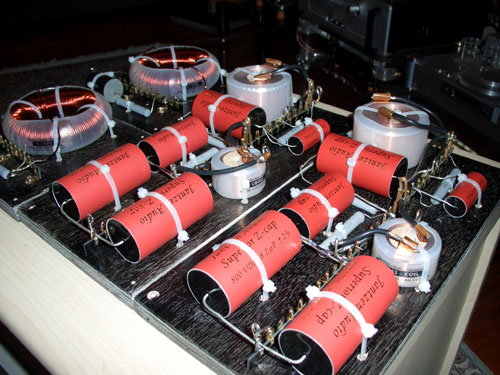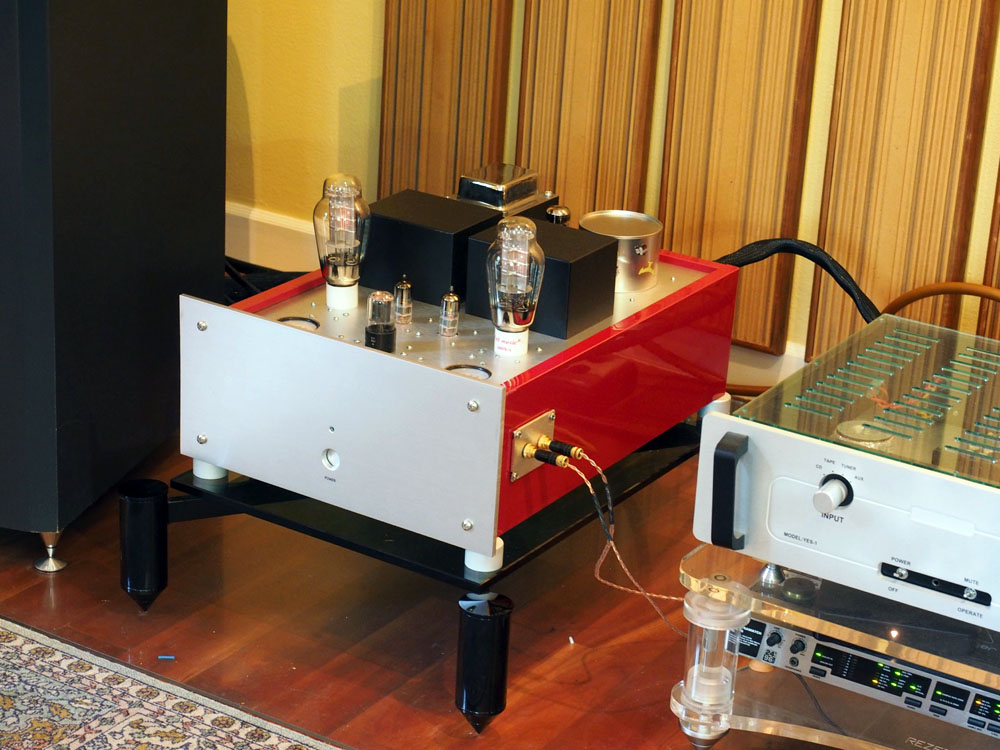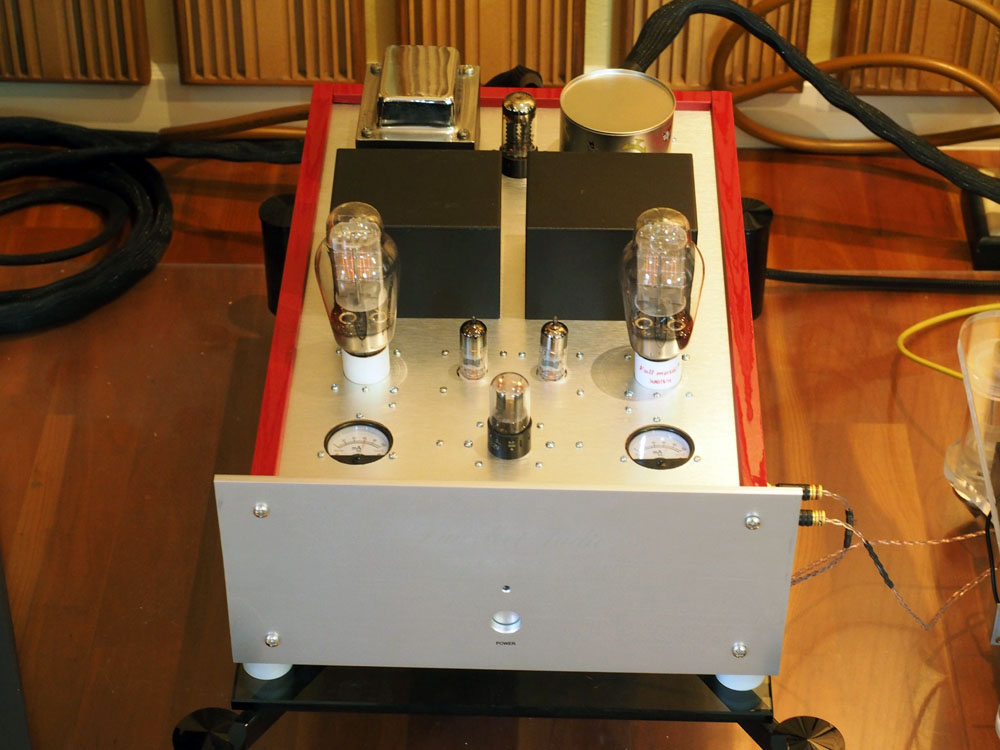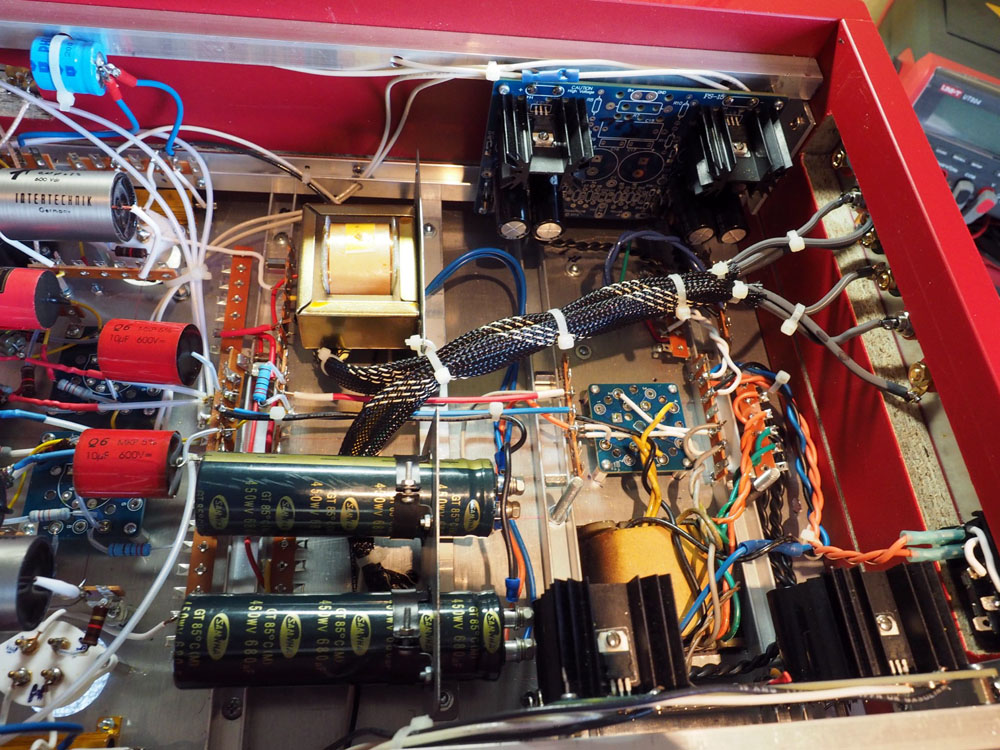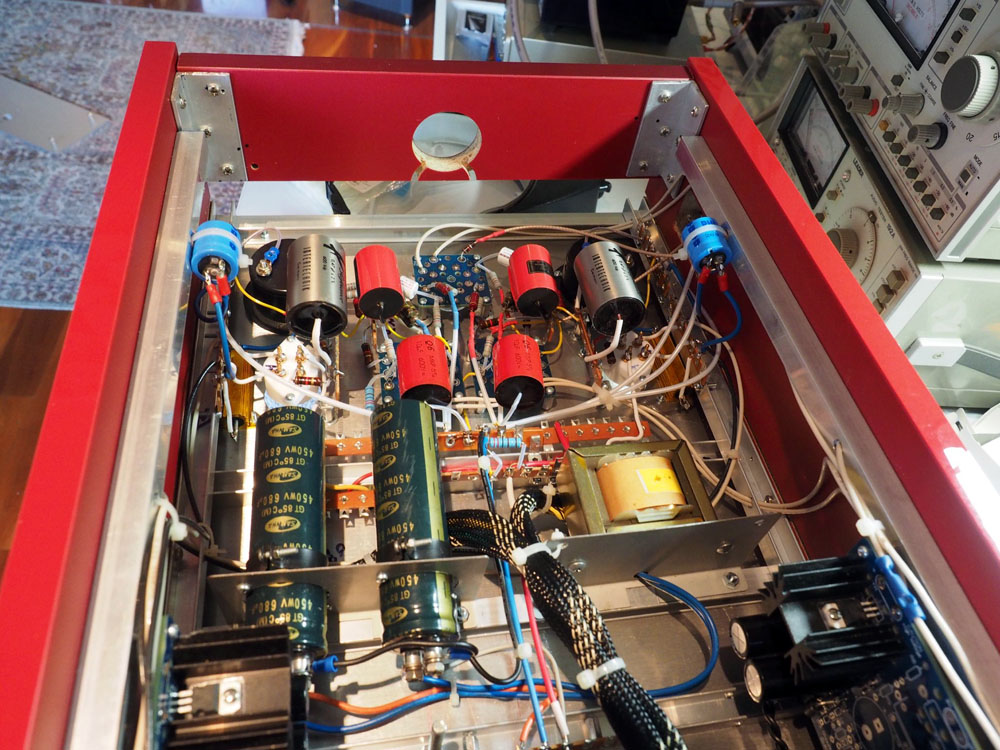DTQWT built by HUH/Thailand First of
all I like to thank you for sharing your views,
experience and findings on your excellent website. This
truly has been an eye opener and inspiration for me.
DTQWT -
Some initial observations: For the past 3 years I have
used a pair of Klipsch rf-25 speakers, which were easy to
drive for my 300b and 845 amplifier, and which to my ears
sound good, and fit for purpose. The only problem was a
slightly muddled/boomy bass, and the speaker being on the
bright (sharp) side of things. I was eager to see,
whether for my particular setup the DTQWT could have some
answers, and with the good help of my friend Khun Kasem
(who was an enormous help re cabinet construction) I
embarked on this project. But also - it looked like a
"real fun" project ... By mid 2007 I placed an offer on Ebay for a Chinese Amp called " Mr Liang LS-845-3. My bid was very low, and I did not expect to win the auction. I did - and I was now stuck with 42kg of Chinese hardware. The Liang 845, was actually a disappointment, and did not deliver what I had hoped for. Again I approached Khun Kovit, with some idea's and he agreed to rebuild the amp for me. So when you now look at the pictures of my music room, then this is not a Liang any longer ( except for power supply and transformers - which are quite good). Kovit did a fine job, and except for a very slight hum, this amp delivers punch, speed and still quite a lot of the 300b magic. For more details about the rebuild, you may want to look at the enclosed file. Again - the internet is wondrous, and a Italian circuit published on the net, became an inspiration. Kovit in his final design did not follow this entirely. But let me say I am still very much pleased with the results. By now I
felt, that I wanted to try to build my own DIY amplifier.
As I however have mentioned to you earlier, my knowledge
and skill level is limited, and I am not trained to work
with dangerous voltage. A Tube DIY kit was therefore not
the right choice, as I had to learn a lot more before
attempting such a project. I ended up building
(assembling) a dual mono amp based on Hypex UcD 180HG
modules (Class D) I found an old (and frankly speaking
almost beyond repair) Hafler amp, in a second hand shop,
which I acquired for a small sum, which in return became
the perfect chassis for my project. What I have learned in my room and from my setup over the past 2 years, is a lot about compromise, and quite a bit about speaker placement, room acoustics and finding the " right" combination of components.. I have also learned not to trust my ears every day and all the time. And I have learned that my Audio memory is limited, and not particularly reliable (especially true when entering "cable-land"). I did however find some tracks, and some setup procedures, which for my particular room work well, and which give me some pointers, what to look for. For a minute kindly assume that my system's resolution, indeed is quite adequate, and that the system is reasonable quiet. The rear wall has been dampened by heavy curtains and Thai pillows. Diffusers are installed on the ceiling, and sidewalls have enough open shelf space to do what they do in terms of reflection and keep the room alive. I will now
use one track from a Chesky test CD, where Chesky is
asking whether microphones can record height. He moves a
single shaker form the bottom, to the middle and then 3
feet above the microphone. It is with this track that I
am able to position my speakers relative to walls and
seating position, to obtain absolute pin point spatial
accuracy. (There is a bit more to it - but let us leave
it at that). Regards, HUH/Thailand PS: I have been able to locate some small shops, which are doing speaker repairs. The first shop I tried managed to improve the damaged Pioneer driver to some degree, but the final result, after reinstallation was still not satisfactory. One of my colleagues recommended another shop, and they managed to realign the coil properly, so that it now can move freely. The downside was that the surround as well as the dustcap was replaced, with what was locally available, and the cone movement is now more stiff than for the original drivers - so some efficiency (maybe) was the price to pay. Anyhow, the driver is now installed, there are no more directly audible distortions, and after a good break in period, this will have to suffice for now.
March 2015:
|
